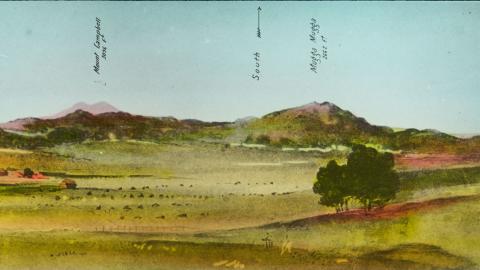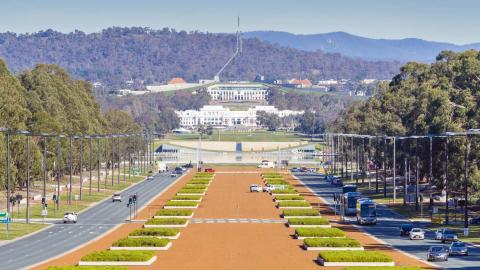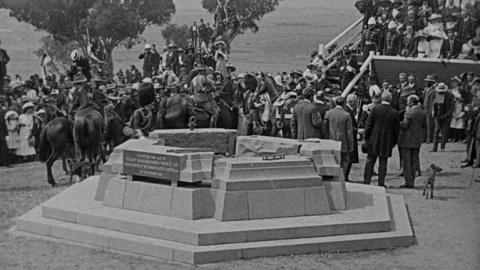

Tharwa Bridge Centenary, 1995
During the Centenary of Canberra year, the NFSA’s TV Unit looks at our holdings of Canberra’s first commercial television station, CTC 7 (now Southern Cross Ten). In working through the news collection we discover some gems that highlight Canberra’s hidden or forgotten history.
Courtesy of Southern Cross Austereo. NFSA: 273561
When Elizabeth McKeahnie of Booroomba Station cut the ribbon to officially open Tharwa Bridge in 1895 she could not have imagined that 100 years later the ceremony would be repeated. But on 27 March 1995 the current lady of Booroomba Station, Pamela Hughes, cut the ribbon and declared the bridge re-opened.
Dressed in period costumes, descendants of families who lived in the Tharwa area in the 1890s mingled with a crowd of over 1000 people. A horse and cart procession across the bridge included the 7th Light Horse Troop from Queanbeyan and a recalcitrant team of bullocks.
Tharwa Bridge is the ACT’s oldest bridge and the prototype of an innovative timber truss designed by civil engineer Percy Allan (other timber truss examples designed by Allan include the Pyrmont and Glebe Island bridges in Sydney). Due to the significance of the Tharwa Bridge it was added to the National Trust of Australia (ACT) register in 1980 and the ACT Government Heritage list in 1996. Engineers Australia has classified it as a Major Engineering Heritage item.
Over the years, the Tharwa Bridge has been upgraded but closed in 2005 due to deterioration. The ACT government announced that a new cement bridge would be built adjacent to the original bridge. This decision was reversed following strong community objections, supported by two NSW-based civil engineers and ACT Heritage legislation. After three years of restoration, the bridge was again re-opened on 24 June 2011.
This news story was broadcast during the Ten News, Canberra bulletin, on 27 March 1995. The reporter was Grant Gilluley, and the news presenter Virginia Nicholls. In 1995 Ten Capital (now Southern Cross Ten) branded its news as Ten News to align with the Ten Network, which the station is affiliated with.
You will notice that the image on this clip is not sharp. The original recording of the news bulletin that includes this story is on Umatic videotape, a format which is now considered at-risk due to chemical breakdown of the magnetic layer. The quality of vision reflects the condition of the original video format and often conservation work is required to elicit the best possible image. The NFSA’s videotape preservation program preserves tapes such as this original Umatic and the content by copying it onto a more stable format. Previously the content copying was done to a broadcast quality video format such as Betacam SP then Digital Betacam. Most recently the NFSA has moved to digital file preservation.
The National Film and Sound Archive of Australia acknowledges Australia’s Aboriginal and Torres Strait Islander peoples as the Traditional Custodians of the land on which we work and live and gives respect to their Elders both past and present.


